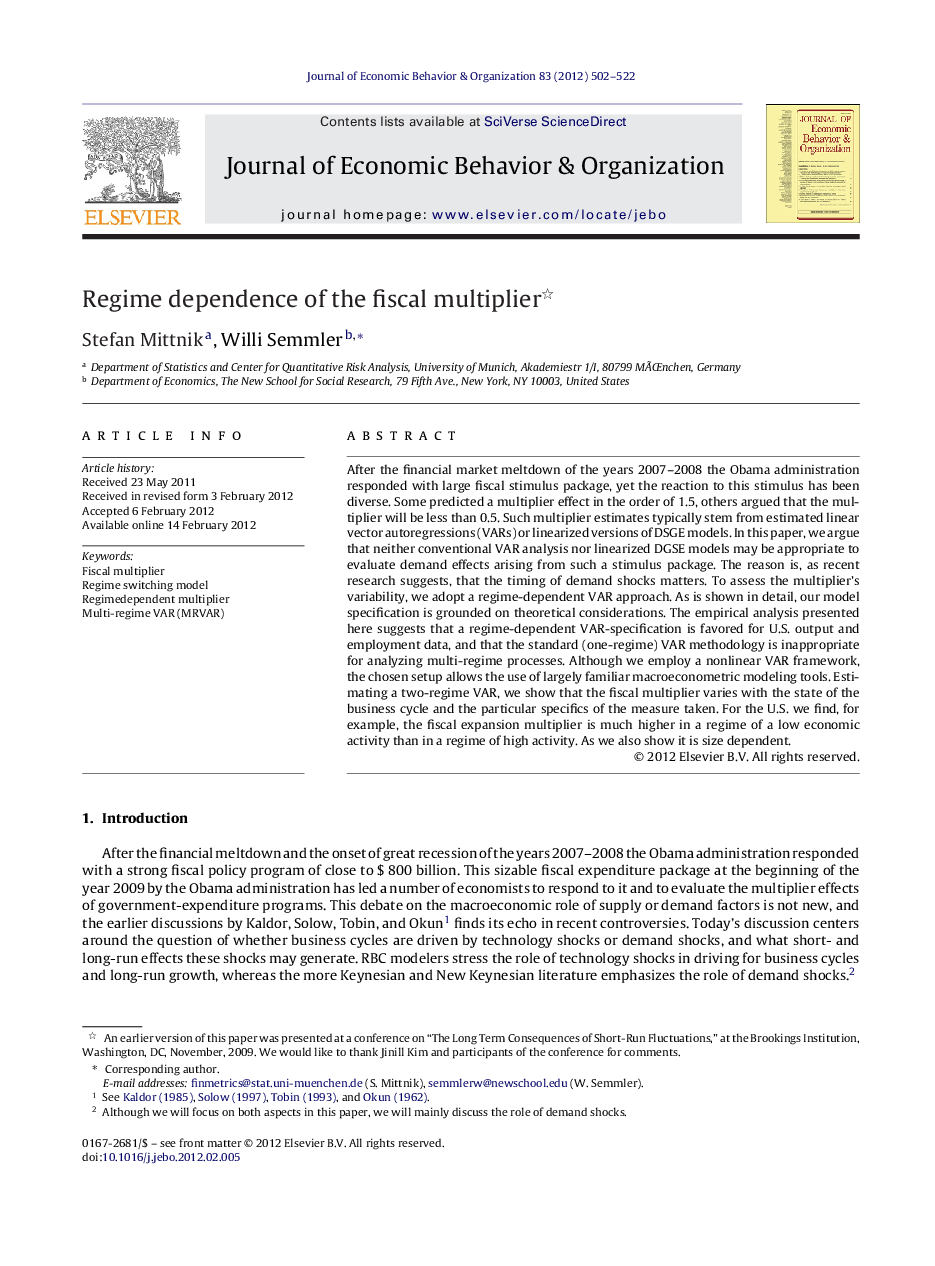| کد مقاله | کد نشریه | سال انتشار | مقاله انگلیسی | نسخه تمام متن |
|---|---|---|---|---|
| 883687 | 912345 | 2012 | 21 صفحه PDF | دانلود رایگان |

After the financial market meltdown of the years 2007–2008 the Obama administration responded with large fiscal stimulus package, yet the reaction to this stimulus has been diverse. Some predicted a multiplier effect in the order of 1.5, others argued that the multiplier will be less than 0.5. Such multiplier estimates typically stem from estimated linear vector autoregressions (VARs) or linearized versions of DSGE models. In this paper, we argue that neither conventional VAR analysis nor linearized DGSE models may be appropriate to evaluate demand effects arising from such a stimulus package. The reason is, as recent research suggests, that the timing of demand shocks matters. To assess the multiplier's variability, we adopt a regime-dependent VAR approach. As is shown in detail, our model specification is grounded on theoretical considerations. The empirical analysis presented here suggests that a regime-dependent VAR-specification is favored for U.S. output and employment data, and that the standard (one-regime) VAR methodology is inappropriate for analyzing multi-regime processes. Although we employ a nonlinear VAR framework, the chosen setup allows the use of largely familiar macroeconometric modeling tools. Estimating a two-regime VAR, we show that the fiscal multiplier varies with the state of the business cycle and the particular specifics of the measure taken. For the U.S. we find, for example, the fiscal expansion multiplier is much higher in a regime of a low economic activity than in a regime of high activity. As we also show it is size dependent.
Journal: Journal of Economic Behavior & Organization - Volume 83, Issue 3, August 2012, Pages 502–522